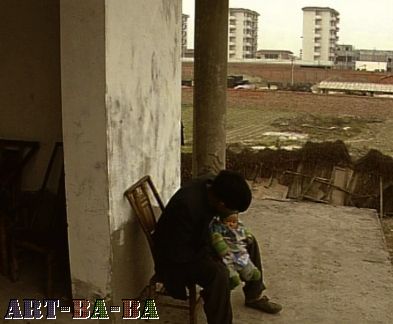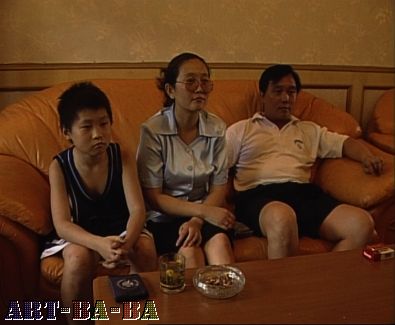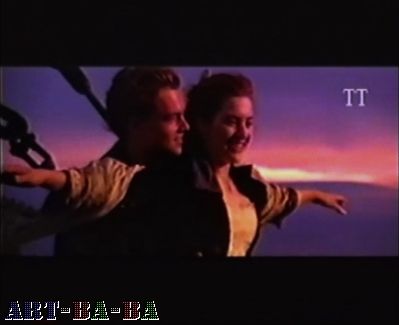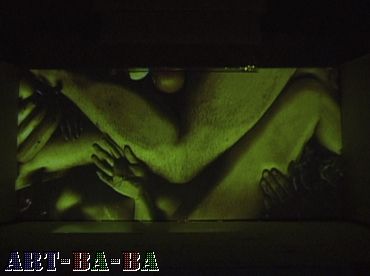Wang Jianwei - Wang Jianwei - Wang Jianwei
DAILY LIFE AND COLLECTION
by Wang Jianwei
Text source: FU Xiaodong
(This article is part of the research on CHINA VIDEO ART on art-ba-ba. Please check this link for more information: CHINA VIDEO ART )
Image source: Wang Jianwei's website
Actually, what I am doing is considered as "collecting". Even to a larger extent my actions don't meet the qualification of documentation. A "documentary" includes a series of devices, approaches, and raises questions, and the ways to follow an event; but I don't want to involve myself with other persons' belongings. This boundary line will exist forever. I am not a documentarian, I am an image collector, and I will complete my imaginary story with this collection.
Using a language of "images" makes me consider things from the angle of relationships. It includes techniques of any kind, production methods, and their relationship to production. It enables us to have an experimental basis for a broad interdisciplinary discussion and reassessment of knowledge, and it also enables us with the opportunity to remake the quality of public resources about commonly lacked knowledge on contemporary art. Art practice is showing more of its participatory and generational nature. This work always limits an artist's personal endeavor within its appropriate position, and the efficiency maintained in the liaisons between the things of all kinds. As "one of them", it will reach an equilibrium between an individual and his/her relationship to the art, both ensuring its existence as an independent unit, and being deprived of the right of disposition and determination for any independent unit or the person himself. The most important feature of participation is to dissolve and dismiss essentialism in the sense of which it relates to a cultural nature.
On "Theater": the work "Theater" is a platform, one of its features is its multi-media nature, and it can technically provide a compounded space and a new way of presentation, the other is that the knowledge background it employs enables art, as well as present-day society, to share a cyclical relationship. To put it in a conceptual language, "Theater" uses a neo-historian's attitude to treat the cultural logic concealed in our history and experiences, to research for our generation a new lexicon for our ideological memory and our daily life.
On "Living Elsewhere": with the gradual development of the economy, cities are enlarging and the traditional land in the countryside is being lost in great quantity. Peasants are swarming into the cities, which results in a struggle with the increasing urban population for those limited sources (space, labor, and identity). As the struggle is aggravated, a way of life for period in flux is thus generated, and a new culture and a new daily life appear from it. I would prefer reading it in the respect of an inter-relationship of my "objects", that is, by the way of every possible aspect concerning daily life, behaviors, and specific places, or in an attitude to understand culture in its daily life and practice.

Living elsewhere, video, 140 min, 1999
A documentary shot in the 90s in Chengdu's neighbourhood, where peasants coming from different provinces of China live in unfinished and abandoned residences…
The creation of my visual imagination may be traced far back to the era where the Cultural Revolution "model operas" were prevalent. I don't remember how many times I have viewed these "Eight Model Operas". It is entirely a formation of a complete language composed by a very limited visual experience. That language could be spoken at will at any time and it was absorbed completely into daily life. Today I am able to sit here, engaged in the visual work of my imagination; it is the transformation from visual imagination to visual experimentation. At that time it was visual imagination, but today, the images of that era have become a memory. Though from the point of view of today's visual theory, those images should be criticized, they exist between some relationship, for it was visual imagination derived from an extremely poor situation of shortage, and it was also a form of visual worship. The value of that age lies in the importance played to the existence of images, because vision was the main factor constituting our psychological problem in that age.
Modernity in China is best symbolized by Socialism. I have had the chance to come in contact with all kinds of incidents since I began photographing buildings in 1998. I found that everybody, whether a government official or an ordinary peasant, always has a fear: the fear of being left behind. I feel that in the world today no one can compete with the Chinese and their desire to catch up; this is my understanding of "modernity". Socialism is building a true modernism, psychologically and spatially, and the catching-up of China is a complete conquering in the sense of space. Any one who is endowed with even a bit of power would attempt to conquer. This is the "aftermath of modernism". This desire to conquer fears to be left behind, would drive itself very hard in a linear direction forward, this is China's style of modernism. It will always be interested in nothing others than the things before it, and would have no interest in yesterday. The ideological premise of any ordinary Chinese as well as of scholars is the establishment of their ideology on the basis of exterminating that of yesterday, and the more completely the better. So we can say, principally we do not have a sense of history, and in our daily life no such concept has been established.
The modernism of China and its hermitic cultural nature perplexed me for a long time. A nation so aspiring for tomorrow and being so determined to demolish the old would do anything without any mercy for yesterday. But culturally speaking, this contemporary art period is an interesting one. There is a very important feature about China's postmodernisms: it gained a reference from the outside world, and it can break away from this reference at any time.


Connection, video, 2 channels, 13 min, 2000
This works is composed of two videos facing each other, on one side the video features various typical families sitting in the same kind of sofas, watching TV, while the other video plays extracts of famous American, Hong-Kongese or other countries' films, they all share a common themes: either violence or love.

Paravent, video performance, 2000
"Paravent" is Wang Jianwei's first theatre work. It consists in a theatrical performance with a video projection as a background. The title refers to these Chinese traditional screens meant to divide a room or to block the view of a certain area within a space. This combination of performance and video create a space both tangible and virtual.
by Wang Jianwei
Text source: FU Xiaodong
(This article is part of the research on CHINA VIDEO ART on art-ba-ba. Please check this link for more information: CHINA VIDEO ART )
Image source: Wang Jianwei's website
Actually, what I am doing is considered as "collecting". Even to a larger extent my actions don't meet the qualification of documentation. A "documentary" includes a series of devices, approaches, and raises questions, and the ways to follow an event; but I don't want to involve myself with other persons' belongings. This boundary line will exist forever. I am not a documentarian, I am an image collector, and I will complete my imaginary story with this collection.
Using a language of "images" makes me consider things from the angle of relationships. It includes techniques of any kind, production methods, and their relationship to production. It enables us to have an experimental basis for a broad interdisciplinary discussion and reassessment of knowledge, and it also enables us with the opportunity to remake the quality of public resources about commonly lacked knowledge on contemporary art. Art practice is showing more of its participatory and generational nature. This work always limits an artist's personal endeavor within its appropriate position, and the efficiency maintained in the liaisons between the things of all kinds. As "one of them", it will reach an equilibrium between an individual and his/her relationship to the art, both ensuring its existence as an independent unit, and being deprived of the right of disposition and determination for any independent unit or the person himself. The most important feature of participation is to dissolve and dismiss essentialism in the sense of which it relates to a cultural nature.
On "Theater": the work "Theater" is a platform, one of its features is its multi-media nature, and it can technically provide a compounded space and a new way of presentation, the other is that the knowledge background it employs enables art, as well as present-day society, to share a cyclical relationship. To put it in a conceptual language, "Theater" uses a neo-historian's attitude to treat the cultural logic concealed in our history and experiences, to research for our generation a new lexicon for our ideological memory and our daily life.
On "Living Elsewhere": with the gradual development of the economy, cities are enlarging and the traditional land in the countryside is being lost in great quantity. Peasants are swarming into the cities, which results in a struggle with the increasing urban population for those limited sources (space, labor, and identity). As the struggle is aggravated, a way of life for period in flux is thus generated, and a new culture and a new daily life appear from it. I would prefer reading it in the respect of an inter-relationship of my "objects", that is, by the way of every possible aspect concerning daily life, behaviors, and specific places, or in an attitude to understand culture in its daily life and practice.

Living elsewhere, video, 140 min, 1999
A documentary shot in the 90s in Chengdu's neighbourhood, where peasants coming from different provinces of China live in unfinished and abandoned residences…
The creation of my visual imagination may be traced far back to the era where the Cultural Revolution "model operas" were prevalent. I don't remember how many times I have viewed these "Eight Model Operas". It is entirely a formation of a complete language composed by a very limited visual experience. That language could be spoken at will at any time and it was absorbed completely into daily life. Today I am able to sit here, engaged in the visual work of my imagination; it is the transformation from visual imagination to visual experimentation. At that time it was visual imagination, but today, the images of that era have become a memory. Though from the point of view of today's visual theory, those images should be criticized, they exist between some relationship, for it was visual imagination derived from an extremely poor situation of shortage, and it was also a form of visual worship. The value of that age lies in the importance played to the existence of images, because vision was the main factor constituting our psychological problem in that age.
Modernity in China is best symbolized by Socialism. I have had the chance to come in contact with all kinds of incidents since I began photographing buildings in 1998. I found that everybody, whether a government official or an ordinary peasant, always has a fear: the fear of being left behind. I feel that in the world today no one can compete with the Chinese and their desire to catch up; this is my understanding of "modernity". Socialism is building a true modernism, psychologically and spatially, and the catching-up of China is a complete conquering in the sense of space. Any one who is endowed with even a bit of power would attempt to conquer. This is the "aftermath of modernism". This desire to conquer fears to be left behind, would drive itself very hard in a linear direction forward, this is China's style of modernism. It will always be interested in nothing others than the things before it, and would have no interest in yesterday. The ideological premise of any ordinary Chinese as well as of scholars is the establishment of their ideology on the basis of exterminating that of yesterday, and the more completely the better. So we can say, principally we do not have a sense of history, and in our daily life no such concept has been established.
The modernism of China and its hermitic cultural nature perplexed me for a long time. A nation so aspiring for tomorrow and being so determined to demolish the old would do anything without any mercy for yesterday. But culturally speaking, this contemporary art period is an interesting one. There is a very important feature about China's postmodernisms: it gained a reference from the outside world, and it can break away from this reference at any time.


Connection, video, 2 channels, 13 min, 2000
This works is composed of two videos facing each other, on one side the video features various typical families sitting in the same kind of sofas, watching TV, while the other video plays extracts of famous American, Hong-Kongese or other countries' films, they all share a common themes: either violence or love.

Paravent, video performance, 2000
"Paravent" is Wang Jianwei's first theatre work. It consists in a theatrical performance with a video projection as a background. The title refers to these Chinese traditional screens meant to divide a room or to block the view of a certain area within a space. This combination of performance and video create a space both tangible and virtual.